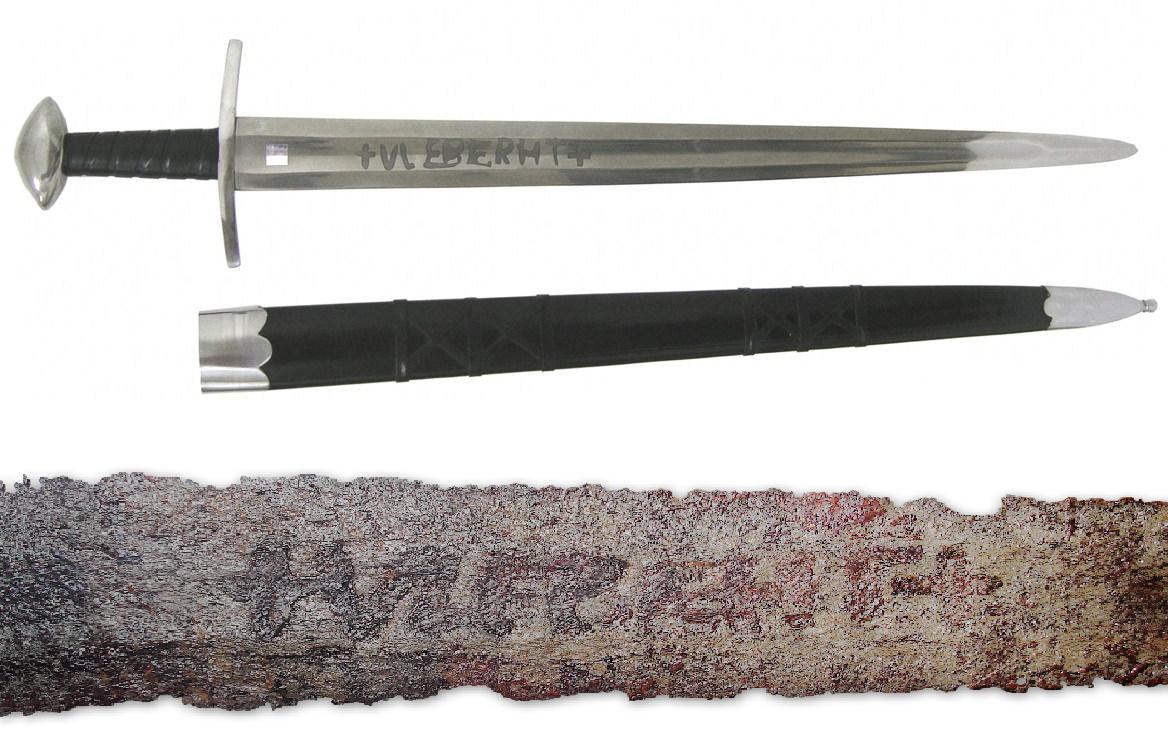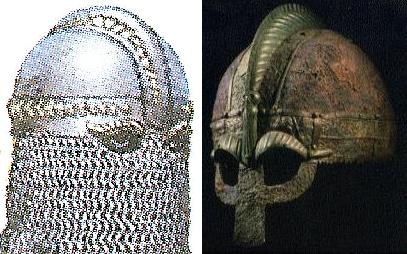Western scholarship has been uncovering a number of links between the Vikings and Persia, as noted in a previous posting on Viking traders and Persian silk.
Readers are also invited to partake in the following upcoming event at the British Museum regarding the Vikings and their legacy:
Fredrik Charpentier Ljungqvist of the University of Stockholm has provided a very intriguing interview with the 2012 documentary television Nova program entitled “Secrets of the Viking Sword“.
The Viking Ulfbehrt Sword: (Top) Contemporary reconstruction of the Ulfbehrt (Picture Source: Reliks.com) (Bottom) an original sample of the weapon from the 9th century – note the “Ulfbehrt” inlay within the blade (Picture Source: Public Domain). A new generation of Western scholars have traced the metallurgical engineering of this venerable Scandinavian weapon to the east, outside of Europe.
 The section of interest in the Nova program is where Professor Ljungqvist (photo at left – Source: Stockholm University) states of the Volga trade route between Lake Malaren to Northern Iran where:
The section of interest in the Nova program is where Professor Ljungqvist (photo at left – Source: Stockholm University) states of the Volga trade route between Lake Malaren to Northern Iran where:
“…it is very likely that the steel that you find in the Ulfberht swords originated from Iran…I would guess that they bought it
Video clip of the PBS Nova program section outlining the Viking-Iranian connection.
In summary, as noted by Professor Ljungqvist, the Vikings sailed from Lake Malaren in Sweden to the Volga River and from there into the Caspian Sea southwards towards the ports of northern Persia.
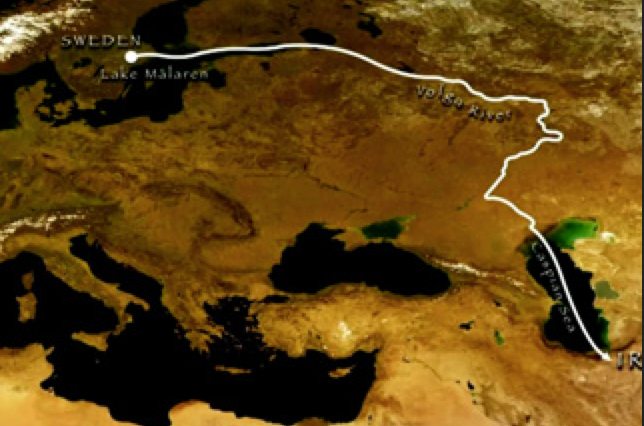 Map of the Viking Volga Trade Route (Picture Source: PBS-Nova Program). The Ulfberht sword is dated to the time when the Volga Trade Route was operational, between the early 800s to mid-1000s. In practice, the Vikings had several trade routes in addition to the Volga.
Map of the Viking Volga Trade Route (Picture Source: PBS-Nova Program). The Ulfberht sword is dated to the time when the Volga Trade Route was operational, between the early 800s to mid-1000s. In practice, the Vikings had several trade routes in addition to the Volga.
Despite the fall of the Sassanian Empire (224-651 CE) to the Arabo-Muslim invasion in 637-651 CE, many facets of the ancient Sassanian Spah (military) continued to endure in northern Persia. The Caliphate had great difficulties subduing Iran’s mountainous and forested north, where local military commanders were often designated with Sassanian military titles. Northern Iran’s metallurgical and weapons building technology continued unabated after the fall of the Sassanians, a factor which benefited Viking traders sailing along the Volga trade route.
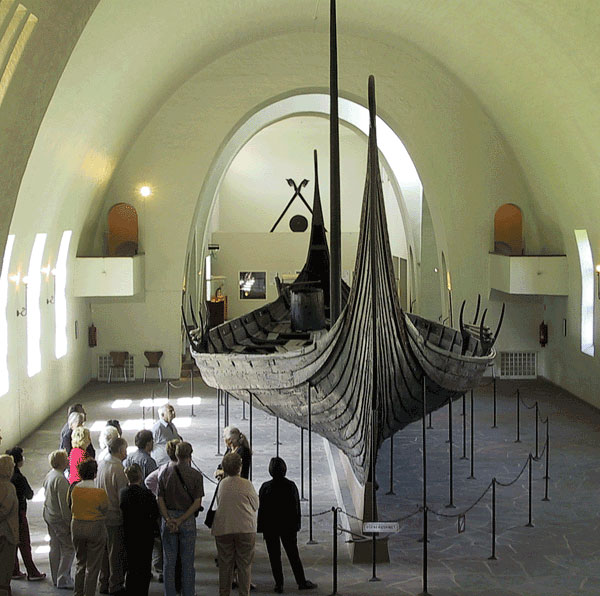 The Oseberg longship at the Viking Ship Museum in Oslo (Picture source: Heritage Trust). Viking ships like these sailed to northern Persia in search of trade.
The Oseberg longship at the Viking Ship Museum in Oslo (Picture source: Heritage Trust). Viking ships like these sailed to northern Persia in search of trade.
However, the Vikings were already aware of Sassanian military technology, long before the advent of the Ulfbehrt sword. As noted by Peter Wilcox:
“The resemblance between this [Sassanian] helmet…from the fully armored king carved into the rock at Taq-i-Bostan [Taghe Bostan] near Kermanshah and those recovered from the Scandinavian graves at Vendel and Valsgarde in Sweden is remarkable ” [Wilcox, P. (1999). Rome’s Enemies: Parthians and Sasanid Persians. Osprey Publishing, p.47, Plate H1].
This raises questions as to whether this technology was transmitted by other Turkic or Iranian peoples in ancient Eastern Europe sharing the same military tradition as the Sassanians, or through trade. The transfer of Iranian and Hun-Turkic weapons technology to the European realms is a fascinating domain, one currently under investigation by numbers of Western scholars.
Viking Helmet (Right; Picture Source: English Monarchs) and reconstruction of earlier Sassanian helmet at Taghe Bostan, Kermanshah, Iran (Left; Picture Source: Close up of Angus Mcbride painting of Sassanian knight at Taghe Bostan, Wilcox, P. (1999). Rome’s Enemies: Parthians and Sasanid Persians. Osprey Publishing, p.47, Plate H1).
The sword building technology was certainly not confined to northern Iran only: Central Asia, with its deep-rooted Turco-Iranian or Persianate civilization was also home to advanced metallurgy and sword building as seen in another portion of the 2012 documentary television Nova program entitled “Secrets of the Viking Sword“.
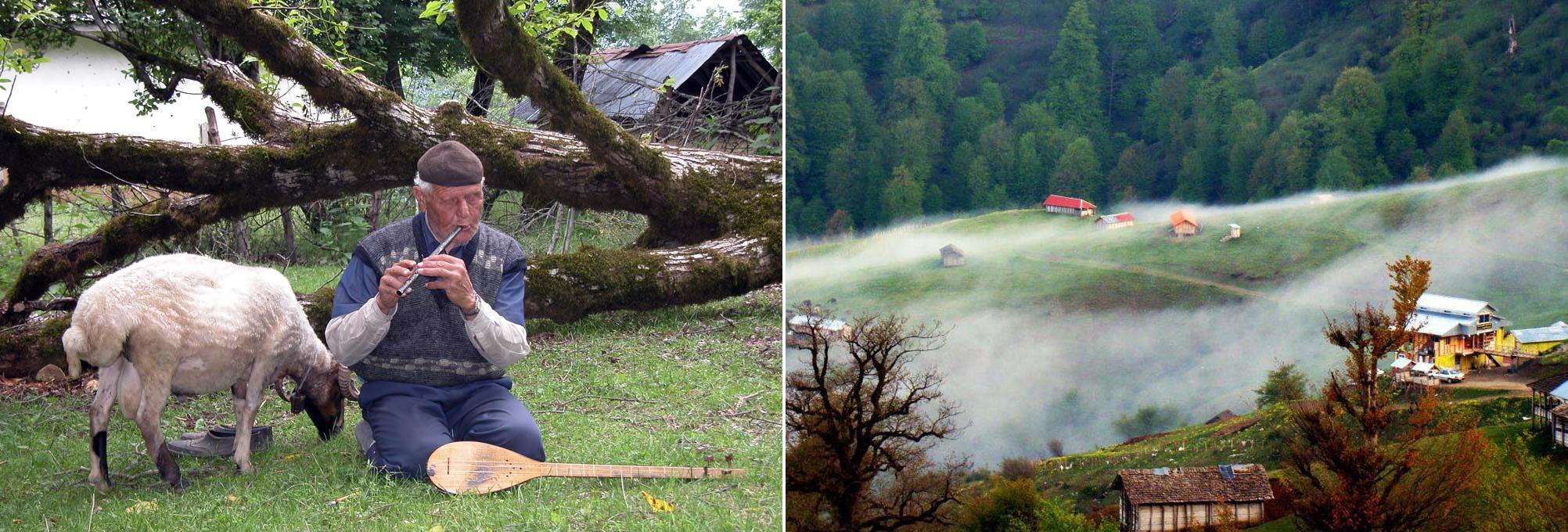 [Click to Enlarge] Images of North Iran: [Left] an elderly Talysh man plays his flute in the forests of Gilan; [Right] Massouleh region in Gilan (Picture Source: Fouman.com). Evidently the Scandinavians and Northern Iranians have had cordial cultural relations since at least Sassanian times, but this topic has received scant academic attention.
[Click to Enlarge] Images of North Iran: [Left] an elderly Talysh man plays his flute in the forests of Gilan; [Right] Massouleh region in Gilan (Picture Source: Fouman.com). Evidently the Scandinavians and Northern Iranians have had cordial cultural relations since at least Sassanian times, but this topic has received scant academic attention.
Studies have yet to be conducted on the relations between the northern Iranians and the Vikings, but it is clear that the interactions were constructive and cordial at the very least. In a sense, the geography of northern Iran would not have appeared all that different from Europe, as Iran is a highly diverse country with respect to geography, linguistic diversity, etc.

